- Who are the key actors of the site?
It seems to me that the main actors of this site are people who work there.
- In what ways does the site hold value, or significance, to its actors?
People who work at Google are proud to have literally the best office in the city.
- How does the site function? What has it planned to ‘do’? How do people behave there?
It is the giant office building that occupies the whole block. (they still have some other businesses occupying small part of the building, but Google office takes the most part of it). It planned to provide people a work environment.
- Describe the affect of the site. (That is, how does it makes you feel? What kind of experience does it generate? What does it look, smell, sound, or taste like? Are these experiences the same for others, or unique tor you?
Walking around the block makes me feel like being on regular Manhattan street, 15th street and north side of 16th feel a little bit more residential, south side of 16th street has two parking entrances and multiple loading docks, that gives me this Brooklyn or west side of Chelsea post -industrial-ish appeal has 8th and 9th avenues feel more noisy, have more traffic and have a little more cafes and Chelsea market on them across from Google office. I’d say it doesn’t make me feel any different even knowing that Google office is there (which is I find kind of a case with some other buildings, that you expect to have different feel, for example European theaters stand on its’s own, create very grand appeal, where is in NYC they are sandwiched between other buildings).
Same is with the sounds. I can hear traffic, cars passing buy, peoples chatter and footsteps, again very similar to other Chelsea and Gramercy streets.
It smells like coffee on the corner because of the Starbucks. I almost wanted to say that other than that it doesn’t smell like anything other than that but on the second thought I believe it smells like Manhattan, like this not super fresh air, but isn’t bad either. The contrast can be felt only if you go upstate and come back, otherwise you getting used to it if you live in the city.
It tastes like the bagel i ate and its a very personal experience. I didn’t try to lick the buildings wall to find out the taste. Although the food inside their cafe is pretty good.
- Has the site always looked like this? Or, has it evolved over time? What are the traces to its history?
The building in art deco style was erected in 1932. It had multi-purpose design. “Union Inland Terminal #1” occupied basement and first floor. It was used used to transport goods by truck to and from railroad lines and/or shipping piers. The second floor was the Commerce section designed for exhibitions and the upper floors were designed for manufacturing.
The freight transportation changed and freight railroads played a dwindling importance in Manhattan. By 1947 it became the Port Authority Building which remained the Port Authority’s headquarters until the opening of the World Trade Center in 1970.
The massive building served a dwindling warehouse/backoffice outpost until 1998 when Taconic Investment Partners acquired it.
Taconic began marketing it as a location to be used as a carrier hotel (carrier hotel is a type of data centre where equipment, space, and bandwidth are available for rental to retail customers.) for the new booming internet business. This was coupled with the fashionable rise of the Chelsea neighborhood that surrounded it.
In 2010, Google, which had previously leased space in the building, contracted to purchase the entire 2,900,000-square-foot (270,000 m2) building, in a deal reported to be worth around $1.9 billion.
The building’s meet-me-room ( which is a place within a carrier hotel where telecommunications companies can physically connect to one another and exchange data without incurring local loop fees.) in its carrier hotel was once the biggest in the city (the other big meet-me room is at 60 Hudson Street).
(These facts are taken from Wikipedia)
- Concept map for blind-fold and with earplugs walking perimeter
- 10 photographs that document borders
Lobby:
Roof/Balcony:
Some boarders inside the site that separate key actors from visitors:
- 3 sound recordings at different locations within the site
- Video interview with two people who you believe to be key actors. What connects them to the site? What communities are they linked to in the site? What other spaces in the city are important to them? Do they have a story about the space that can’t be heard elsewhere?
Pecha Kucha:
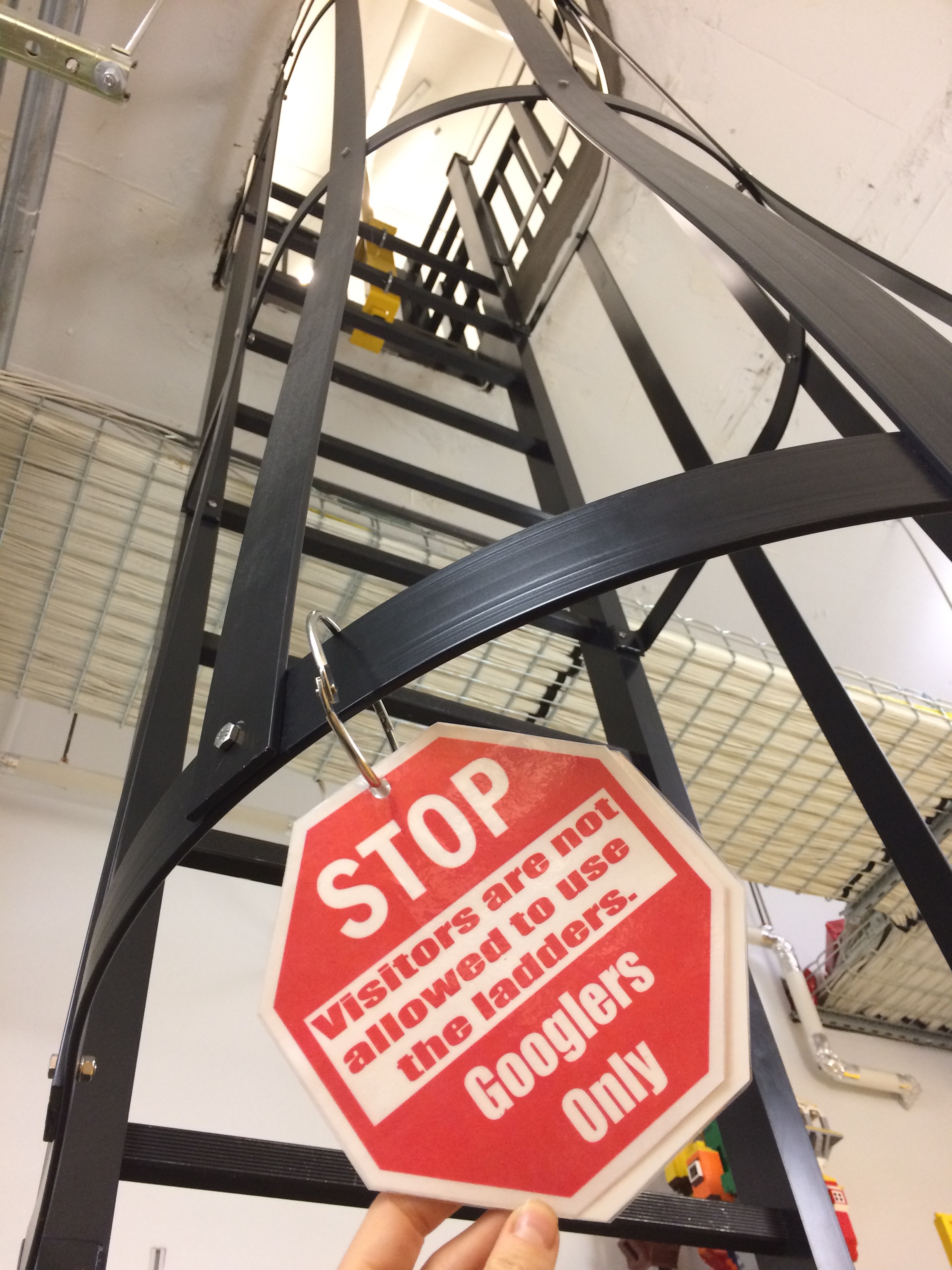
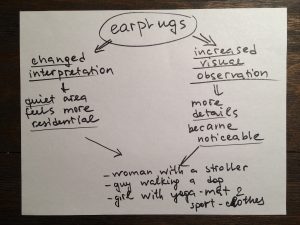
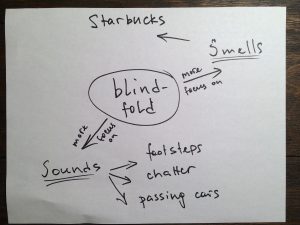


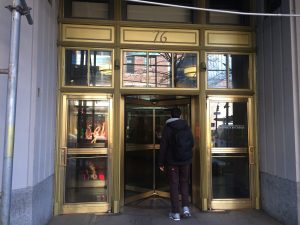
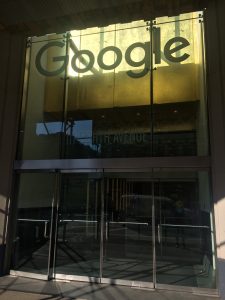
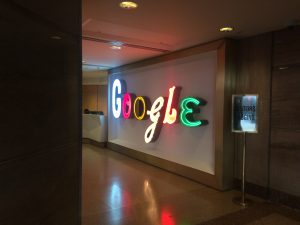
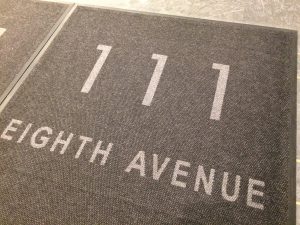

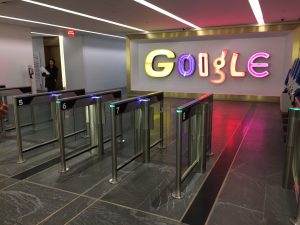
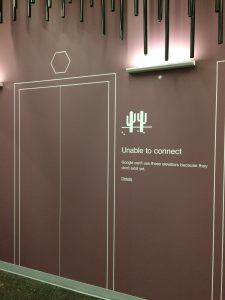

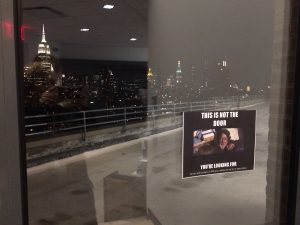
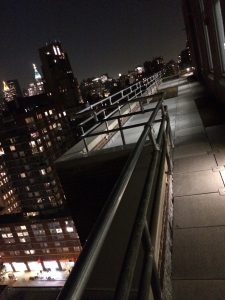
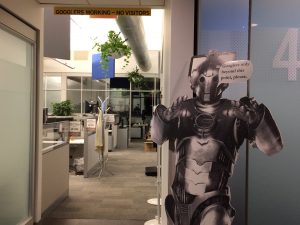
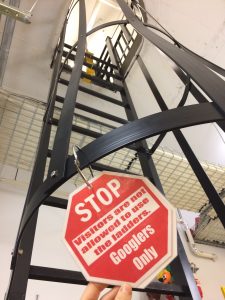
Oleksandra,
I really enjoyed listening about your research and experiences about the Google building. The key actors of your site are employees of Google. They interact with the borders and walls of Google differently than those who do not work at Google. Employees see the border(s) as “permeable” because those borders do not necessarily exclude them but perhaps invite them. However, to individuals who do not work with or are associated with Google, they are unable to pass through those borders/walls with a similar experience.
Oleksandra,
I like the transition of your video, where it starts from the bigger picture (map) of your site, then you begin to be more in depth towards the interiors. I can see that there are plenty of different borders, starting from the outer buildings and then from the interior. I notice that offices like Google’s have multiple borders, for both the workers and guests.
Alex,
Through your video I can clearly see the physicality of the border being the outside on the google building itself. I like how you included other borders within the site such as the doors and the gates you have to go through to enter. I can conclude that you need to work in this building or have special access to enter it’s border.
The presentation of the structure from the outside inward defines the border and then portrays what is within these borders. The inclusion of personal images to a highly secluded site also shows how the border is very selective. The numerous amount of signs that state employees only show that this site also is very limited to the public.